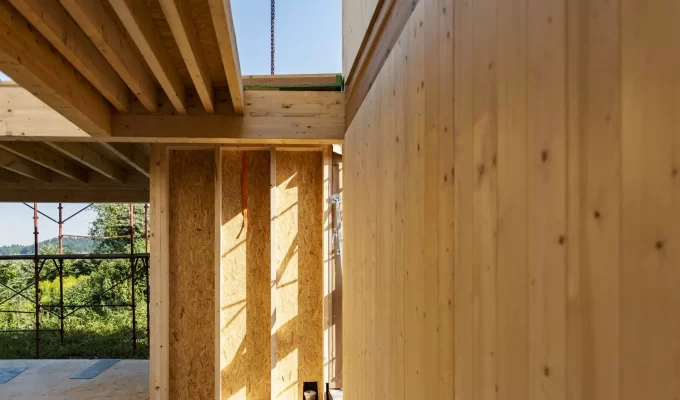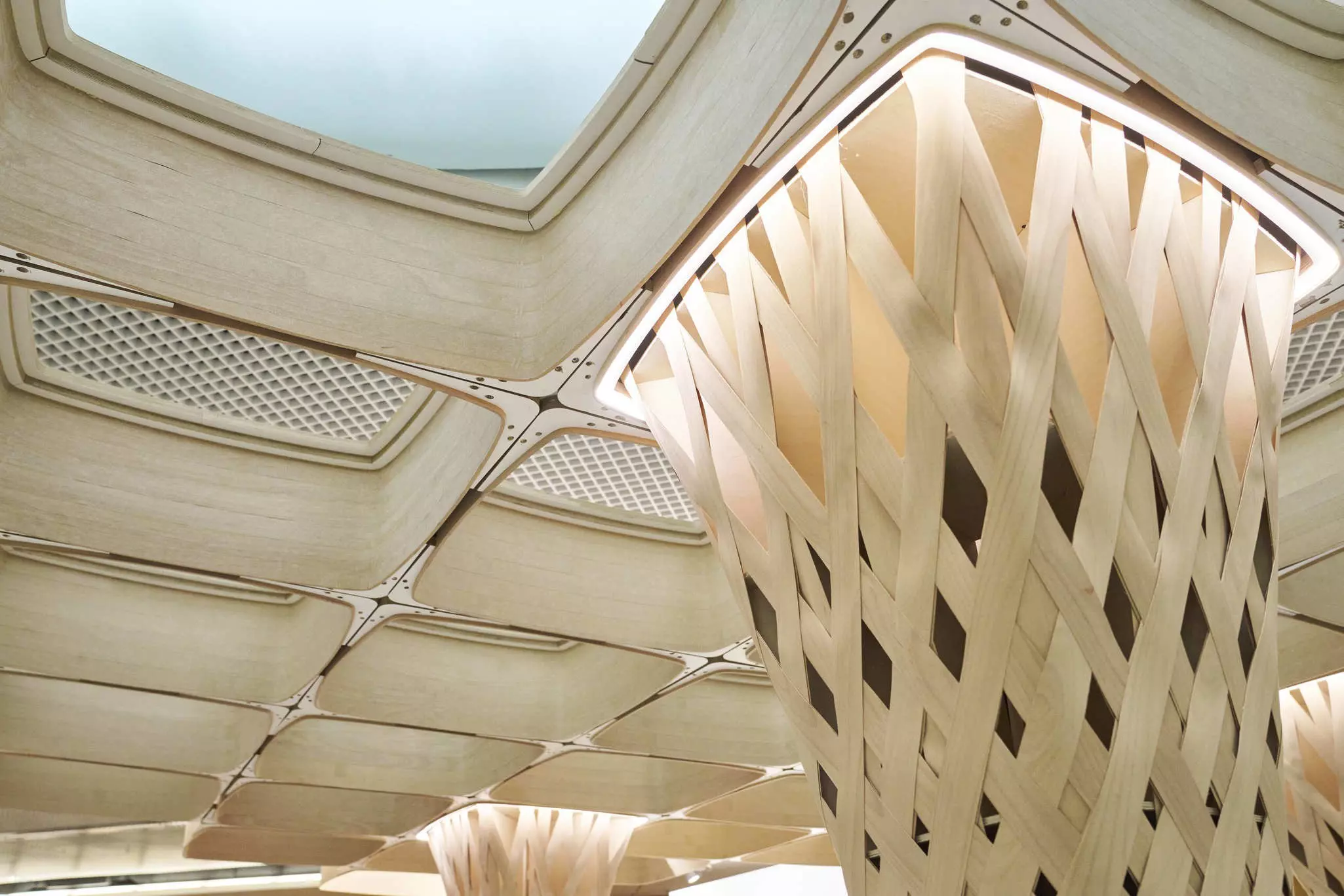
Is it all a question of material and the construction method?
From sufficiency to resilience
Circular construction: resource efficiency and more
Like many industrialized nations, Germany also faces the major challenge of significantly reducing its own resource consumption. Added to that are the volume of waste, material bottlenecks and challenges in the supply chains, which require a more resilient supply strategy. More efficient use of resources is therefore essential to safeguard the quality of life for current and future generations. Approaches and solutions to this will be showcased at BAU 2025 in Munich from January 13 to 17, 2025.
The sustainable use of available resources requires a rethink in all areas and among all those involved in construction. That includes, for example, using environmentally friendly, recyclable, renewable or sustainably produced materials and raw materials, or reducing the emission and energy intensity of conventional building materials through new production processes. How buildings are used and operated also has an impact on resource conservation. A much-discussed topic is circular construction, which requires not only recyclable building materials and components but also a different way of planning and building.
The responsible use of resources is one of the most important tasks of today’s construction industry, as Johannes Kreißig of the German Sustainable Building Council (DGNB) explains: “The new self-image can only be the preservation of the building stock and the reuse of materials that have been used in construction. For all new buildings, the key maxims are greater flexibility of use, the greatest possible durability and circular construction methods. We at the DGNB have been successfully promoting all of this for more than 15 years. And more and more decision-makers in the industry are going down this path. So it is not surprising that sustainability and resource conservation have become key topics at BAU.”
Is it all a question of material and the construction method?
The use of renewable, regional and local raw materials as well as familiar old construction methods plays a central role in promoting resource-efficient construction methods. In addition to organic materials that already bind CO2 during their growth, other raw materials such as clay or lime also offer ecological and economic advantages as they are available locally and also have an impact on supply chains and transport routes. In addition, the further development of building materials plays an important major role in the future of the construction industry. Concrete and steel, which account for a significant proportion of global carbon emissions, continue to be needed to construct buildings and infrastructure due to their material properties. Current developments show that the carbon footprint can be improved by substituting bricks, for example. Research into carbon and gradient concrete also shows potential for construction through material reduction and targeted control of the material properties, which enable new forms of architectural expression while minimizing environmental impact. Hybrid construction methods that utilize the positive effects of individual materials and elements in combination, are a further lever for more resource conservation. The result is compounds with optimized properties such as higher strength and load-bearing capacity at less weight, enabling the construction of larger and more complex buildings.
From sufficiency to resilience
Sustainable development can be achieved through various strategies at different levels. The basic strategies of sustainability play a key role here: efficiency, sufficiency, and consistency. While the efficiency strategy aims to reduce energy and raw material consumption, and the consistency strategy focuses on developing durable and sustainable products, sufficiency strategies question usage-specific consumption patterns in terms of “less” and “enough” in order to enable social justice within planetary boundaries. At a time when the effects of climate change can increasingly be seen in the form of flooding and localized heavy rainfall events, resilience is coming to the fore as a strategy. Its aim is to ensure that buildings and infrastructure remain flexible and resilient in the long term in the face of unforeseen events through robust construction and the integration of adaptation measures such as green roofs and water-permeable surfaces.
Circular construction: resource efficiency and more
The use of recycled materials can also reduce the emissions associated with new production. In this context, the concept of the circular economy, often used synonymously with circular construction, stands for a paradigm shift in the construction industry: away from the traditional linear economy (make, take, waste) toward a sustainable circular approach (reduce, reuse, recycle). That not only saves resources, but also opens up new value chains and business models in the industry. It requires, among other things, a design for disassembly, in other words, the ability to dismantle structures and compounds in building products according to type, and consistent recycling at the same level of quality, but also analog platforms and digital tools that can provide information about the potential of the urban mine.
Digital tools and resource management
An effective circular economy toward a more sustainable and resource-efficient construction industry calls for transparency regarding materials and resources, and a structure to track their deployment and make optimum use of them over the entire life cycle. That requires a material register to provide a detailed inventory of all the materials and products installed in a building. The product or building resource passport goes a step further. In addition to the current call for tenders by the German
Ministry of Construction to design an overall approach to building information management, various players have already taken action that already provides detailed information now on the origin, composition, environmental impact, reusability, and recyclability of building materials, and the energy efficiency of the building.
Global challenges like climate change, scarcity of resources, and a growing environmental awareness in society make a rethink in the construction industry essential. The future development of construction therefore calls for interdisciplinary collaboration and, above all, the courage to leave well-trodden paths.
About BAU
BAU, the world’s leading trade fair for architecture, materials and systems, is the largest and most important event in the industry. Unique worldwide, BAU brings together the industry’s market leaders in this multi-trade exhibition every two years and is regarded as an innovation driver and industry network. The range of exhibits is broken down according to building materials, products and topics. Everyone involved internationally in planning, constructing and designing buildings comes to BAU: architects, planners, investors, industry and trade representatives, tradespeople, and many more. As one of its USPs, BAU combines know- how from all sectors and trades at a high international level. The numerous events in the supporting program, including high-profile forums with experts from around the world, round out the trade fair program.
Messe München
As one of the world’s leading trade fair organizers, Messe München presents the world of tomorrow at its around 90 international trade fairs. These include twelve of the world’s leading trade fairs such as bauma, BAU, IFAT, and electronica. Its portfolio comprises trade fairs for capital and consumer goods, as well as for new technologies. Together with its subsidiaries, it organizes trade fairs in China, India, Brazil, South Africa, Türkiye, Singapore, Vietnam, Hong Kong, Thailand, and the U.S. With a network of over 15 associated companies and almost 70 offices worldwide, Messe München is active in more than 130 countries. The more than 150 events held annually attract around 50,000 exhibitors and around three million visitors in Germany and abroad.
